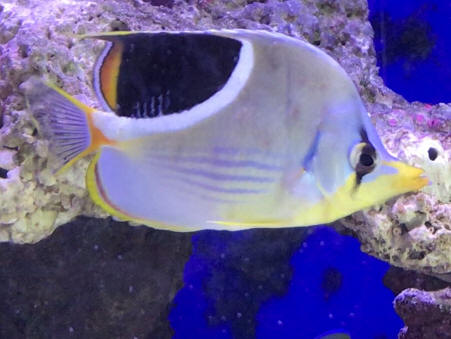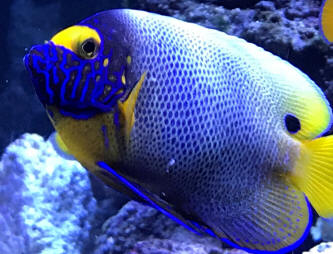|
FAQs on Uronema
Related Articles: Marine Parasitic Disease,
Marine Ich: Fighting
The War On Two Fronts, Crustacean Parasitic
Disease, Quarantine, Quarantine of Marine
Fishes,
Related FAQs: Parasitic Disease 2, Parasitic Disease 3, Parasitic Disease 4, Parasitic Disease 5, Parasitic Disease 6, Parasitic Disease 7, Parasitic Disease 8, Parasitic Disease 9, Parasitic Disease 10, Parasitic Disease 11, & FAQs on:
Parasite-infested Systems: Parasitic Marine Tanks, Parasitic Marine Tanks
2, Parasitic Reef
Tanks, Parasitic Reef Tanks
2, & FAQs on: Preventing Parasite
Problems, Diagnosing Parasitic
Diseases, References on Parasitic
Diseases, Index Materia Medici for
Parasitic Diseases (medicines), Treating Marine Parasitic Diseases,
Using Hyposalinity to Treat
Marine Parasitic Diseases, Hyposalinity Treatments 2,
Fallow Tanks,
& Best Crypt FAQs, Cryptocaryoniasis, Marine
Ich, Marine Velvet Disease Biological Cleaners, Using Hyposalinity to Treat Parasitic
Disease, Parasitic
Worms, Crustacean Parasitic
Disease, Isopods,
|
|
|
Saddleback Butterfly diagnosis
10/12/19
Hey Crew,
Can you tell me what we are looking at here? Pale lesions under the scales
of this saddleback. Eating OK not really behaving stressed . 4 " fish
introduced one month ago . In a 180g FOWLR . Water parameters are good ( Sg
1.022 , pH 8.2 , temp 78 dgf, Nitrates 5 ppm )
Thanks Jimmy
<Unfortunately this looks like Uronema. DO ASAPractical look up on WWM Re.
This fish needs to be treated, likely the entire system, ASAP. Bob Fenner>
|
 |
|
Re: Saddleback Butterfly diagnosis
10/14/19
Thank you as suspected . I will feed metronidazole . Will Chloroquine
phosphate kill shrimp / any crustaceans in the display ?
<Might: I would move all crustaceans elsewhere>
The lesions actually look better than one week ago . But I guess fish can do
ok with Uronema but perish quickly once the disease becomes systemic.
<Often so>
This is a tough problem to eradicate Thanks Jimmy
<Indeed. BobF>
|
Re: Saddleback Butterfly diagnosis/ Blue face diagnosis
10/22/19
Follow-Up on Saddleback
Good morning,
Life got in the way and I was called out of town on work for a week and I
was unable to separate the saddleback from the display. I finally did so. No
other fish are affected, yet.
<This observation leads me to think that the situation is NOT Uronema, not
pathogenic at all (otherwise it would have likely spread), but perhaps
"just" trauma of some sort>
The lesions on the saddleback have not worsened and the fish is feeding
aggressively.
<These too>
I elected to do a formalin dip and observe in quarantine. So far lesions on
the saddleback are still present/ maybe improved but fish is eating/ acting
well. I think the fish has Lymphocystis already, but I am thinking that the
pathogen is not really acting like a Uronema infection/ infestation.
<Ahh, I as well. As usual, I am only comfortable w/ pathogen diagnoses that
include microscopic examination>
On another note, ( and from the same system as the saddleback ) over the
past month I have noticed a couple of lesions on a blue face angel as
pictured.
<Mmm>
These are very slow growing. This beautiful fish is fat and acts happy.
The fish was quarantined for 2 months initially dipped in formalin solution
> Cupramine x 2 weeks > dewormed with metronidazole / Nitrofurantoin. It was
in the same system as the saddleback . Any thoughts, looks like Lymphocystis
under the scale.
<Could be "simple stress" here; perhaps viral/Lymphocystis involved. SEE, as
in read on WWM re avenues to address (nutrition, improved water quality...)
Bob Fenner>
Thank you Jimmy
|
 |
|
|
|

